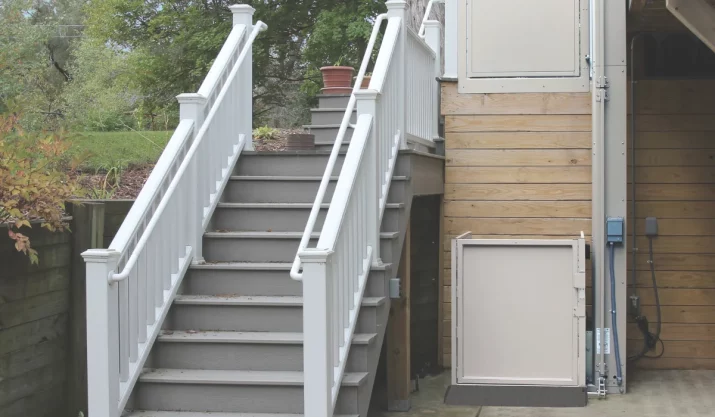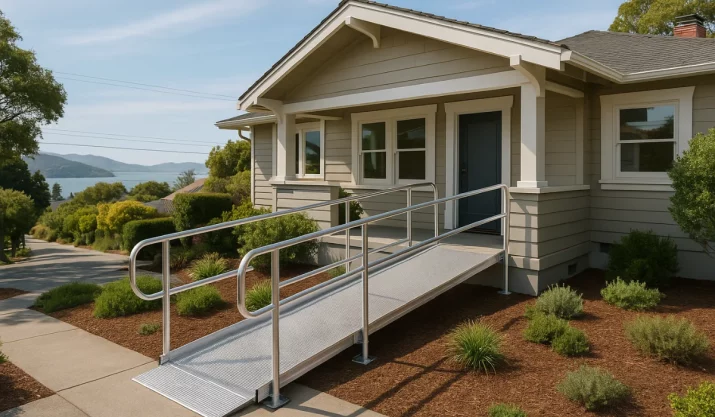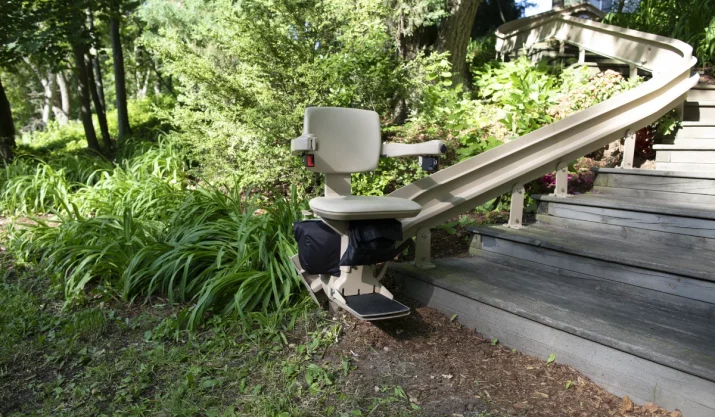Walk-In Tubs: Pros & Cons Every Senior Should Know
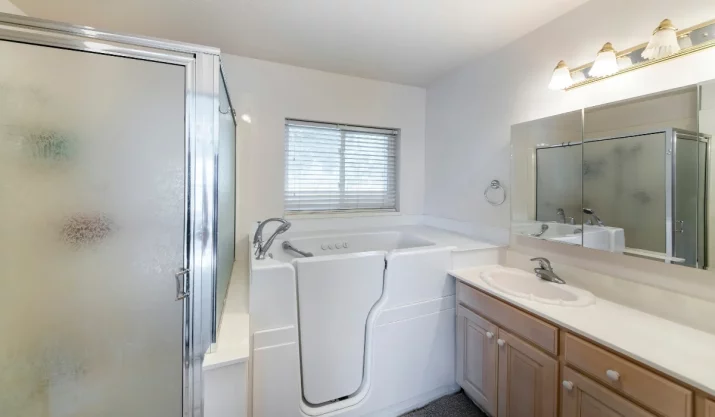
Table of Contents
If you’re looking for a safer and easier way to take a bath, a walk-in tub might be the right choice. These tubs are built for accessibility, which makes them a great option for people with limited mobility, disabilities, or anyone who wants a more secure bathing experience.
But before you make a decision, it’s important to look at the benefits of a walk-in tub as well as the cons of a walk-in tub.
Key Takeaways
- Walk-in tubs offer safer entry with non-slip floors, grab bars, and handrails that support balance and stability.
- Features like hydrotherapy jets, heated seats, and backrests help ease pain and create a calming bathing experience.
- The total cost includes plumbing changes, water heater upgrades, and professional installation, which may exceed a standard tub.
- While California Mobility does not sell walk-in tubs, the company installs lifts, ramps, and other products for aging in place.
Pros of Walk-In Bathtubs
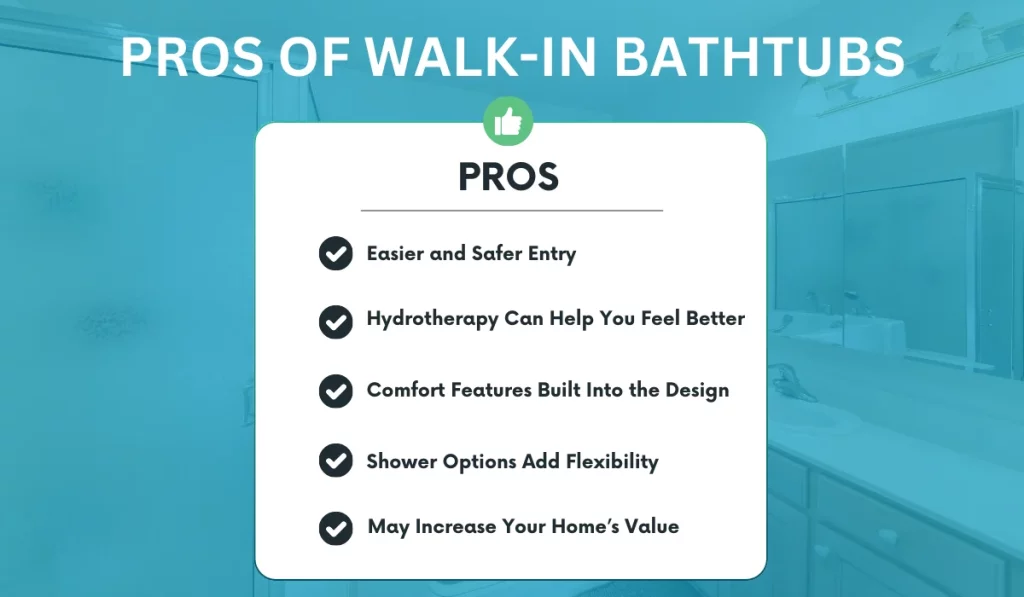
If you’re thinking about a walk-in tub, there are a few big ways it could make your daily routine easier and safer:
Easier and Safer Entry
Traditional tubs can be hard to step over, especially for seniors or people with mobility issues. Walk-in tubs come with a low threshold, so you can step in without lifting your leg too high.
Inside the tub, you’ll find non-slip flooring, grab bars, and handrails. All safety features that help reduce the risk of falls.
This kind of easy access can give you more confidence and more peace of mind, especially if you live alone or don’t have a full-time caregiver.
Hydrotherapy Can Help You Feel Better
Many walk-in tubs come with hydrotherapy jets, water jets, and whirlpool options. These features use warm water to help with sore muscles, joint pain, and blood flow.
People with arthritis, back pain, or poor circulation often find that hydrotherapy makes a big difference in their comfort and well-being. Studies show that warm water therapy can ease pain and improve circulation.
The warm water also helps you relax, giving you a more enjoyable, spa-like experience from the comfort of home.
Comfort Features Built Into the Design
Walk-in tubs are designed with comfort in mind. Most have built-in seating, so you don’t have to lower yourself down like in a traditional bathtub.
The seat is usually the right height to sit and stand easily. Many models also come with a backrest and heated seats to keep you warm and supported while you bathe.
This setup makes for comfortable bathing, especially if you’re dealing with pain or stiffness.
Shower Options Add Flexibility
Many walk-in tubs include handheld showerheads, which are helpful if you don’t want to soak or need to rinse off while seated. Some even come with both fixed and handheld showerheads for better functionality.
That means your tub can work a lot like a walk-in shower, but with the added comfort of sitting. This is also helpful for caregivers who assist with bathing.
May Increase Your Home’s Value
A walk-in tub can improve your home’s resale value, especially in California towns where more people are planning to age in place.
Whether you’re replacing an old tub or upgrading during a bathroom remodel, adding this kind of feature can make your home more appealing to future buyers.
Some homeowners even install walk-in tubs as part of a long-term plan to avoid moving later on.
The Cons of Walk-In Bathtubs
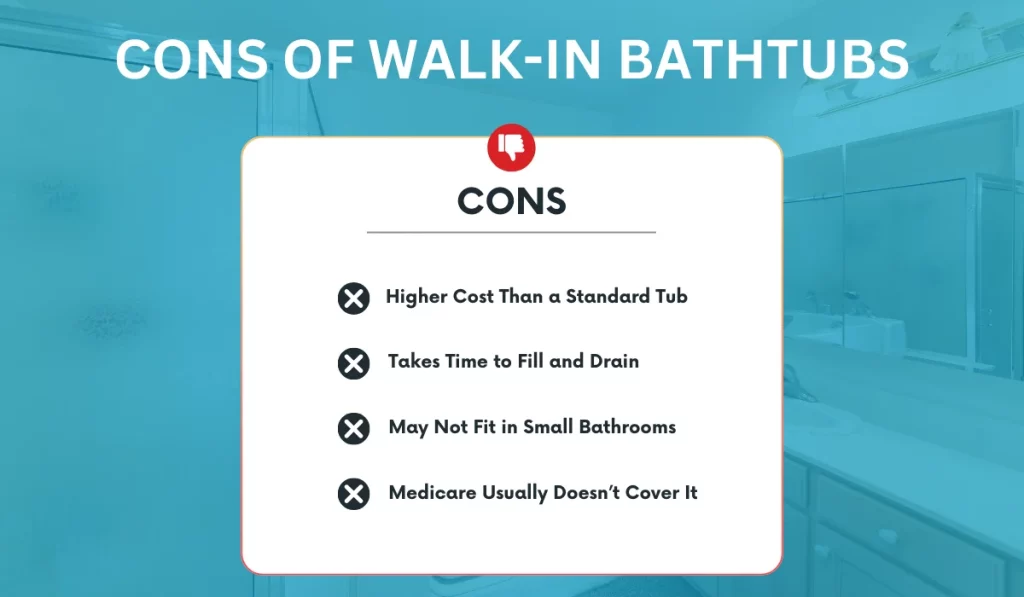
Walk-in tubs can be a great upgrade, but they’re not perfect for everyone. Before you commit, here are a few things you’ll want to think about:
Higher Cost Than a Standard Tub
One of the biggest concerns is the tub cost. Walk-in tubs cost more than standard tubs, and there are often extra installation costs too.
If you need to change plumbing or upgrade your water heater to support more hot water, the price goes up even more. A professional installation is often required to make sure everything is done safely.
Some premium models cost more but come with better features and a warranty.
Takes Time to Fill and Drain
Once you’re inside and the watertight door is closed, you have to wait for the tub to fill with hot water. After your bath, you need to wait again while the water drains. This can take several minutes.
Some tubs come with fast-fill or quick-drain features, but those add to the cost.
Waiting inside the tub during this time might be uncomfortable for some users, especially if the water temperature isn’t just right.
May Not Fit in Small Bathrooms
If your bathroom has limited space, installing a walk-in tub may be difficult.
These tubs are often larger than a standard bathtub, so you might need to change your layout or remove storage to make them fit. This adds to the time and cost of the installation process.
This is something to think about if you live in an older home or a smaller apartment.
Medicare Usually Doesn’t Cover It
Most of the time, Medicare does not cover the cost of a walk-in tub.
Since it’s seen as a comfort item, not a medical need, you’ll probably have to pay out of pocket. Some private insurance plans or VA programs may help, and some sellers offer payment plans.
It’s also a good idea to ask about the warranty so you know what’s covered if anything breaks.
Need Help Making Your Home Safer?
At California Mobility, we specialize in helping older adults and people with mobility challenges live more safely and independently.
From stairlifts and home lifts to wheelchair ramps and vertical platform lifts, our team provides solutions designed for your unique needs and home layout.
While we don’t install walk-in tubs, we’re happy to point you in the right direction. And we’re here to support other essential mobility upgrades that make aging in place easier.
Want to make your home safer? Talk with one of our California-based specialists to see what options fit your space and needs




